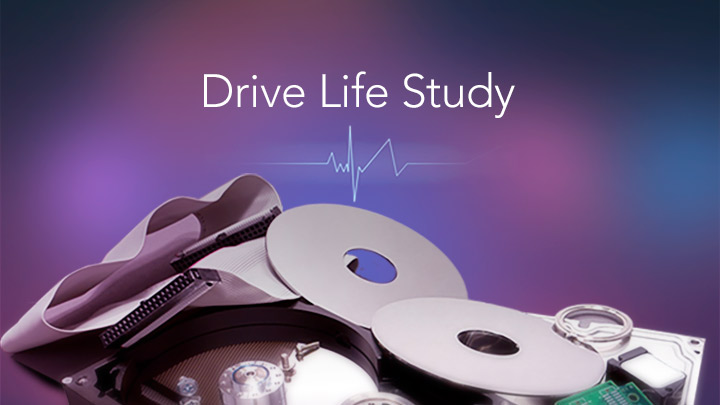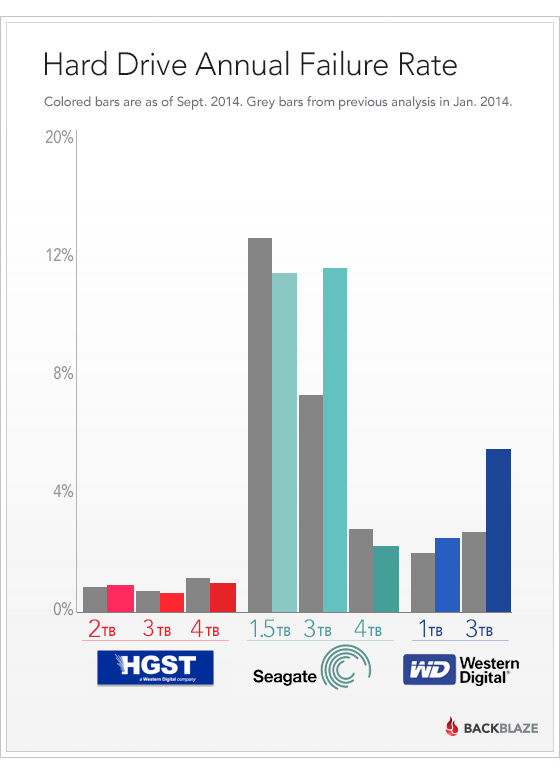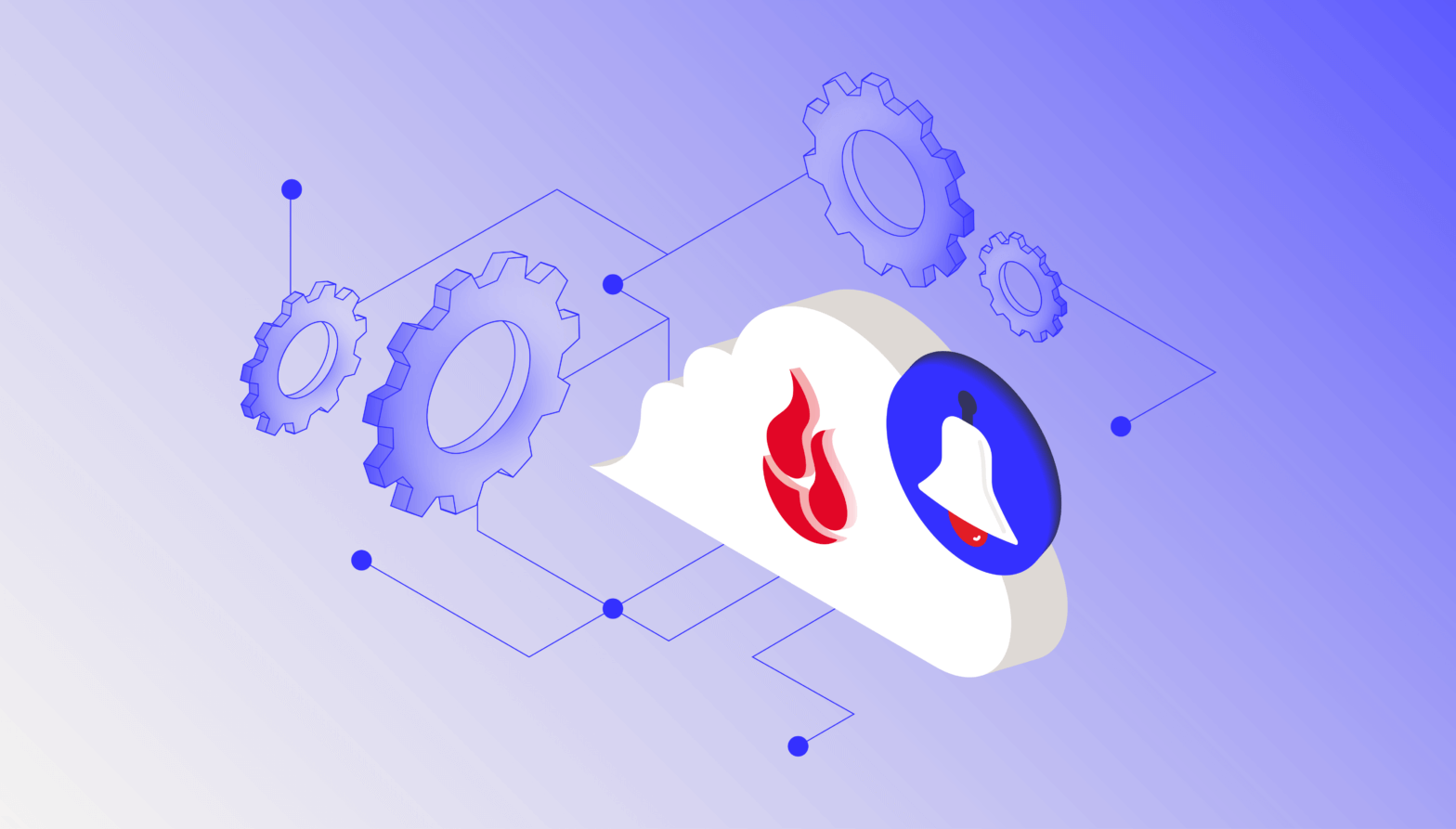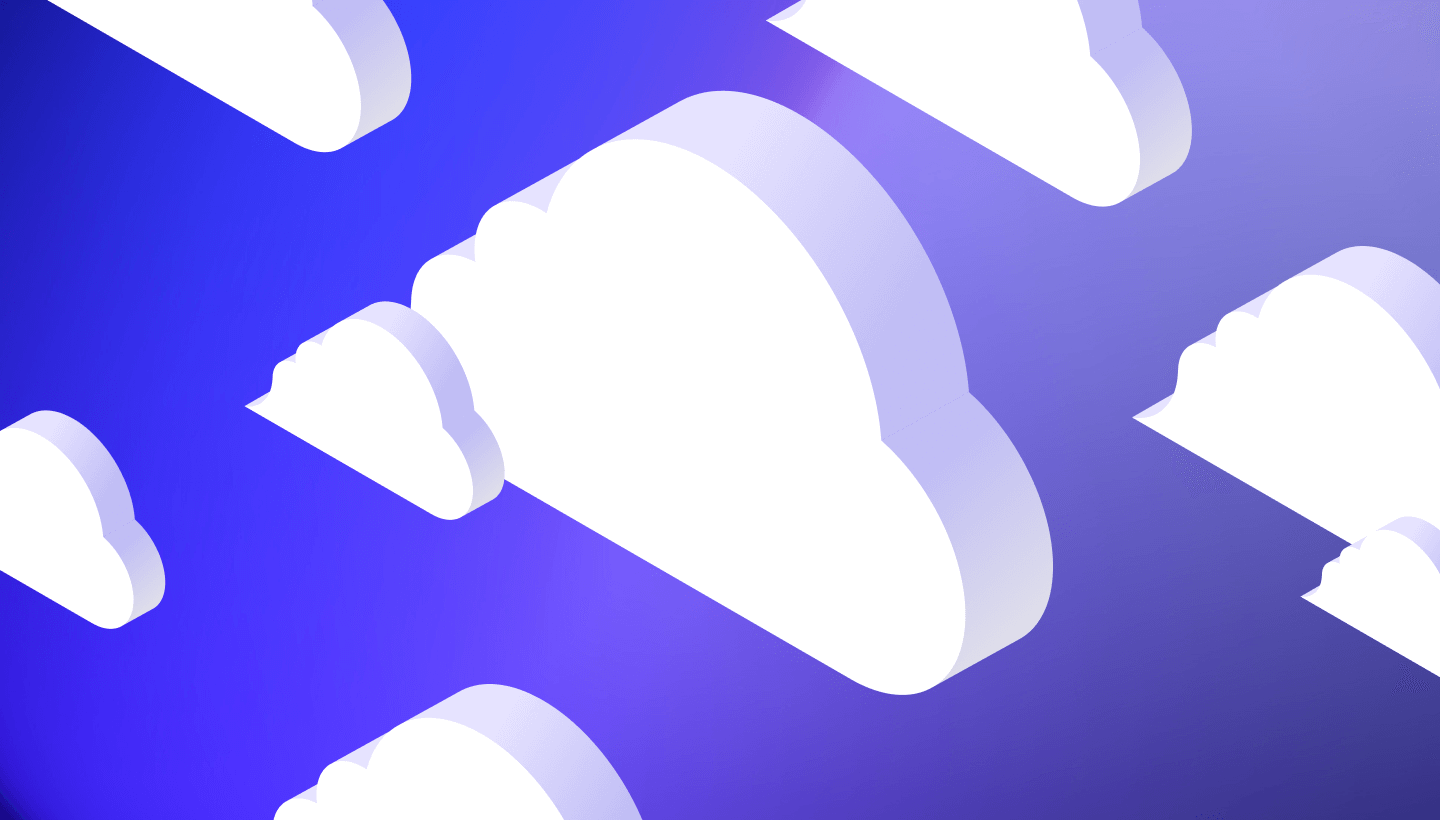At Backblaze we now have 34,881 drives and store over 100 petabytes of data. We continually track how our disk drives are doing, which ones are reliable, and which ones need to be replaced.
I did a blog post back in January, called “What Hard Drive Should I Buy?” It covered the reliability of each of the drive models that we use. This month, I’m updating those numbers and sharing some surprising new findings.
Reliability of Hard Drive Brands
Losing a disk drive at Backblaze is not a big deal. Every file we back up is replicated across multiple drives in the data center. When a drive fails, it is promptly replaced, and its data is restored. Even so, we still try to avoid failing drives, because replacing them costs money.
We carefully track which drives are doing well and which are not, to help us when selecting new drives to buy.
The good news is that the chart today looks a lot like the one from January, and that most of the drives are continuing to perform well. It’s nice when things are stable.
The surprising (and bad) news is that Seagate 3TB drives are failing a lot more, with their failure rate jumping from 9% to 15%. The Western Digital 3TB drives have also failed more, with their rate going up from 4% to 7%.
In the chart below, the grey bars are the failure rates up through the end of 2013, and the colored bars are the failure rates including all of the data up through the end of June 2014.
Share this Image On Your Site
You can see that all the HGST (formerly Hitachi) drives, the Seagate 1.5TB and 4TB, and Western Digital 1TB drives are all continuing to perform as well as they were before. But the Seagate and Western Digital 3TB drives failure rates are up quite a bit.
What is the likely cause of this?
It may be that those drives are less well-suited to the data center environment. Or it could be that getting them by drive farming and removing them from external USB enclosures caused problems. We’ll continue to monitor and report on how these drives perform in the future.
Should we switch to enterprise drives?
Assuming we continue to see a failure rate of 15% on these drives, would it make sense to switch to “enterprise” drives instead?
There are two answers to this question:
- Today on Amazon, a Seagate 3TB “enterprise” drive costs $235 while a Seagate 3TB “desktop” drive costs $102. Most of the drives we get have a three year warranty, making failures a non-issue from a cost perspective for that period. However, even if there were no warranty, a 15% annual failure rate on the consumer “desktop” drive and a 0% failure rate on the “enterprise” drive, the breakeven would be 10 years, which is longer than we expect to even run the drives for.
- The assumption that “enterprise” drives would work better than “consumer” drives has not been true in our tests. I analyzed both of these types of drives in our system and found that their failure rates in our environment were very similar—with the “consumer” drives actually being slightly more reliable.
Detailed Reliability of Hard Drive Models
This table shows the detailed breakdown of how many of which drives we have, how old they are on average, and what the failure rate is. It includes all drive models of which we have at least 200. A couple of models are new to Backblaze and show a failure rate of “n/a” because there isn’t enough data yet for reliable numbers.
| Number of Hard Drives by Model at Backblaze |
||||
| Model | Size | Number of Drives |
Average Age in years |
Annual Failure Rate |
|---|---|---|---|---|
| Seagate Desktop HDD.15 (ST4000DM000) |
4TB | 9619 | 0.6 | 3.0% |
| HGST Deskstar 7K2000 (HGST HDS722020ALA330) |
2TB | 4706 | 3.4 | 1.1% |
| HGST Deskstar 5K3000 (HGST HDS5C3030ALA630) |
3TB | 4593 | 2.1 | 0.7% |
| Seagate Barracuda 7200.14 (ST3000DM001) |
3TB | 3846 | 1.9 | 15.7% |
| HGST Megascale 4000.B (HGST HMS5C4040BLE640) |
4TB | 2884 | 0.2 | n/a |
| HGST Deskstar 5K4000 (HGST HDS5C4040ALE630) |
4TB | 2627 | 1.2 | 1.2% |
| Seagate Barracuda LP (ST31500541AS) |
1.5TB | 1699 | 4.3 | 9.6% |
| HGST Megascale 4000 (HGST HMS5C4040ALE640) |
4TB | 1305 | 0.1 | n/a |
| HGST Deskstar 7K3000 (HGST HDS723030ALA640) |
3TB | 1022 | 2.6 | 1.4% |
| Western Digital Red (WDC WD30EFRX) |
3TB | 776 | 0.5 | 8.8% |
| Western Digital Caviar Green (WDC WD10EADS) |
1TB | 476 | 4.6 | 3.8% |
| Seagate Barracuda 7200.11 (ST31500341AS) |
1.5TB | 365 | 4.3 | 24.9% |
| Seagate Barracuda XT (ST33000651AS) |
3TB | 318 | 2.2 | 6.7% |
We use two different models of Seagate 3TB drives. The Barracuda 7200.14 is having problems, but the Barracuda XT is doing well with less than half the failure rate.
There is a similar pattern with the Seagate 1.5TB drives. The Barracuda 7200.11 is having problems, but the Barracuda LP is doing well.
Summary
While the failure rate of Seagate and Western Digital 3TB hard drives has started to rise, most of the consumer-grade drives in the Backblaze data center are continuing to perform well, and are a cost-effective way to provide unlimited online backup at a good price.
Notes
September 30, 2014: We were nicely asked by the folks at HGST to replace the name Hitachi with the name HGST given that HGST is no longer a Hitachi company. To that end, we have changed Hitachi to HGST in this post and in the graph.






